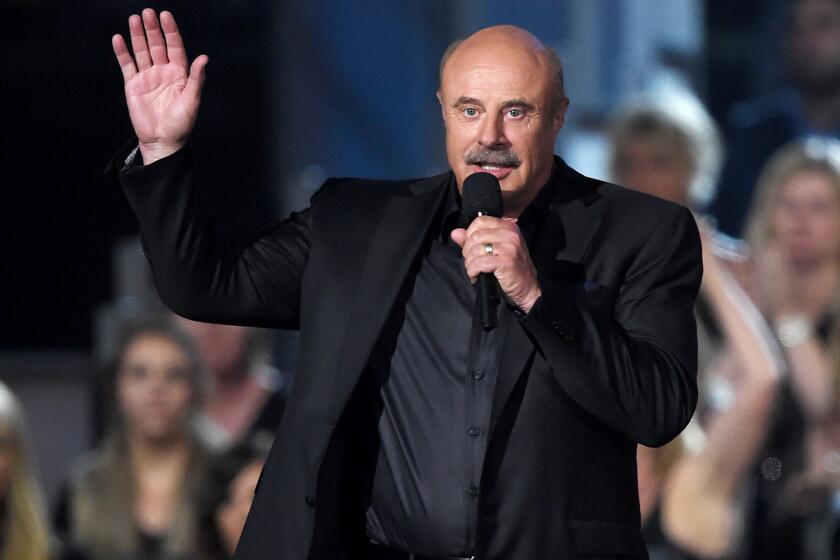MGM files for bankruptcy protection
- Share via
Metro-Goldwyn-Mayer, the fabled studio whose origins go back to Hollywood’s earliest days, filed for bankruptcy protection, sagging under a mountain of debt.
The filing, made Wednesday morning in New York, came after MGM’s leading creditors struck a deal with corporate raider Carl Icahn, who had amassed about 15% of the company’s debt and was previously pushing for a merger between MGM and rival studio Lions Gate Entertainment.
Instead, Icahn agreed to support a plan under which the chief executives of film production and finance company Spyglass Entertainment will run MGM when it exits Chapter 11, which could occur as quickly as next month.
Under the prepackaged bankruptcy plan, MGM’s $4 billion in debt will be swapped for more than 99% of the equity in the reorganized company. Spyglass principals Gary Barber and Roger Birnbaum will become co-chief executives and co-chairmen, managing a smaller studio with lower overhead and producing fewer movies.
As part of an arrangement struck late Tuesday night, Icahn agreed to swing his support behind the Spyglass plan and not challenge it in Bankruptcy Court — a possibility that could have delayed any reorganization.
MGM’s leading creditors agreed to amend their reorganization plan. Most notably, 15 titles from Spyglass’ library will no longer be combined with MGM’s catalog. Spyglass’ Barber and Birnbaum, who were to get nearly 5% equity in the company, will now get 0.5%, in exchange for bringing movie projects to MGM that they had in development.
Icahn had opposed MGM’s acquiring the Spyglass library titles, which included “The Sixth Sense” and “Seabiscuit,” contending they were overvalued.
In addition, Icahn will be allowed to appoint one person to MGM’s nine-person board. Barber and Birnbaum will also each have a seat on the board.
Once MGM exits bankruptcy, the creditors have also agreed to negotiate “in good faith” with Lions Gate or any other interested party about a potential merger or acquisition. The creditors had previously rejected a proposal by Lions Gate that would give them 55% of the equity in a combined studio.
It has taken MGM creditors more than a year to hammer out a reorganization plan that would keep the 86-year-old studio as a stand-alone company. Earlier, they had rejected a $1.5-billion bid by Time Warner Inc. as too low.
Barber and Birnbaum will face formidable challenges in rebuilding MGM, a studio that more than any other captured Hollywood’s golden era of the 1930s and 1940s but for the last 20 years has been shuffled through a series of mergers, acquisitions, buybacks and buyouts and until it was stripped away to a skeleton of its former self.
Finally, in 2005 a consortium of investors including Sony Corp., Comcast Corp. and private equity firms acquired MGM for nearly $5 billion. Their stakes will be wiped out in the reorganized MGM, which is being valued in the bankruptcy plan at $1.9 billion.
The studio’s primary asset, its library of more than 4,000 titles, has fallen precipitously in value recently as consumers have cut back on DVD purchases. The library in 2008 generated $557 million in cash flow. This year, according to according to bankruptcy documents, it will generate $228 million.
In addition, the company’s financial woes have meant it was barely able to produce or distribute any films in the last year under motion picture Chairwoman Mary Parent, who recently left. Barber and Birnbaum will be looking to raise $500 million once MGM exits bankruptcy in order to fund operations and the production of new films and television shows.
According to the bankruptcy filing, MGM’s initial release slate for 2012 is projected to include five to six new movie productions and two acquisitions of completed films. The company estimates it will ultimately spend $300 million annually on production and $340 million on worldwide advertising and prints.
The studio will look to produce a James Bond sequel every other year starting in November 2012.
Perhaps most valuable of all, MGM owns half the rights, with Warner Bros., to two “Hobbit” films that will begin production in February for release in 2012 and 2013. After having already invested $40 million in pre-production and development, MGM is seeking a lender to provide the $265 million to $275 million it estimates it will owe for its half of production, along with its half of marketing expenses.
The bankruptcy documents indicate that MGM’s head count will drop to about 320 employees in 2011 from more than 400. Barber and Birnbaum, who employ about 30 people at Spyglass, are expected to bring over their own production team headed by Jonathan Glickman.
More to Read
The biggest entertainment stories
Get our big stories about Hollywood, film, television, music, arts, culture and more right in your inbox as soon as they publish.
You may occasionally receive promotional content from the Los Angeles Times.










